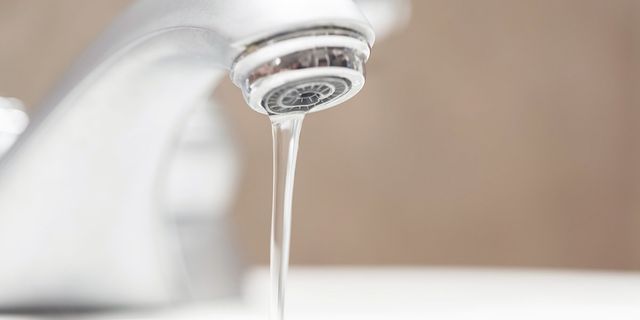How do you really feel when it comes to 10 Reasons for Low Water Pressure in Your House?

Low water stress in your home can be an irritating issue, influencing whatever from bathing to washing recipes. If you're experiencing weak water flow, there are numerous possible causes and remedies to check out. In this overview, we'll discuss typical factors for low water stress and practical steps to resolve the issue successfully.
Intro to Low Water Pressure
Low tide pressure happens when the circulation of water from your taps, showers, and other fixtures is weak than common. This can make everyday tasks extra challenging and less reliable. Understanding the reasons for low tide stress is crucial to discovering the appropriate solution.
Common Root Causes Of Low Tide Stress
Pipeline Obstructions
Over time, pipes can end up being blocked with natural resource, debris, or particles, restricting the flow of water. This is a common problem in older homes with galvanized steel pipes.
Corrosion
Rust within pipelines can cause leaks and lowered water pressure. Corrosion build-up can restrict water circulation, particularly in aging plumbing systems.
Faulty Stress Regulatory Authorities
Pressure regulators are accountable for maintaining regular water pressure in your home. If they malfunction, it can result in low water pressure or irregular circulation throughout your house.
Community Water System Issues
Occasionally, the issue lies outside your home. Metropolitan water supply issues, such as main line leakages or maintenance work, can briefly minimize water pressure in your area.
Just How to Detect Low Water Stress
Examining Taps and Fixtures
Beginning by checking the water pressure at different faucets and fixtures throughout your home. If the issue is isolated to specific areas, it may suggest local problems.
Examining Pipes
Examine visible pipes for indications of leakages, deterioration, or blockages. Pay attention to any unusual sounds, such as knocking or rattling pipelines, which might show problems within the plumbing system.
Consulting with a Plumber
If you're not able to identify the cause of low tide stress, consider employing a professional plumber to perform a thorough examination. They can recognize underlying problems and suggest appropriate solutions.
Do It Yourself Solutions to Repair Low Tide Pressure
Cleaning Aerators and Showerheads
Mineral deposits can collect in aerators and showerheads, decreasing water flow. Eliminate and clean these elements routinely to boost water stress.
Flushing Hot Water Heater
Sediment buildup in the water heater can restrict circulation and lower effectiveness. Purging the storage tank regularly assists remove debris and preserve ideal performance.
Examining Pressure Regulator
Ensure that the pressure regulatory authority is functioning properly. Adjusting or replacing the regulatory authority can aid bring back proper water stress throughout your home.
Cleaning Clogs in Pipes
For small clogs, attempt making use of a plumbing snake or chemical drainpipe cleaner to clear obstructions in pipes. Beware when making use of chemicals and adhere to security standards.
When to Call an Expert Plumber
If do it yourself initiatives fail to settle the problem or if you presume substantial plumbing issues, it's ideal to seek assistance from a qualified plumber. They have the proficiency and devices to resolve intricate concerns securely and properly.
Safety Nets to Keep Water Pressure
Regular Maintenance
Arrange regular upkeep for your plumbing system to prevent problems such as rust, leaks, and clogs. Attending to small troubles early can help stay clear of more considerable repair work later.
Mounting a Pressure Booster
Think about mounting a pressure booster pump to improve water stress in areas with continually reduced flow. This can be specifically useful for multi-story homes or residential properties with high-demand fixtures.
Tracking Water Usage
Be mindful of water usage routines and prevent overtaxing the plumbing system. Easy modifications, such as staggering showers and washing lots, can assist maintain ample water pressure.
Final thought
Managing low tide stress can be discouraging, but identifying the underlying reasons and executing ideal options can restore ideal flow throughout your home. Whether it's cleansing aerators, evaluating pipes, or seeking advice from a plumber, taking proactive steps can guarantee a stable supply of water for your daily needs.
FOUR WAYS TO FIX LOW WATER PRESSURE NOW
Turning on a shower or faucet only to find the water comes out in a sad, slow drizzle is never a good feeling. How exactly are you supposed to wash a pan or take a quick shower when it takes 10 minutes just to rinse off a little soap? The good news is that when your water pressure is bad, there's always a cause: typically one that can be easily fixed. Here are some of the most common causes of low pressure and what you can do to fix the issue:
DEBRIS AND MINERAL DEPOSIT BUILDUPS
If you notice low water pressure from just one or two of the fixtures in your house, the problem likely has to do with debris buildup. Water is full of minerals and other debris, all of which can accumulate in your pipes and on your fixtures. This can cause a blockage that affects how much water flows through. To fix this, try filling a small plastic bag with white vinegar, and use a rubber band to hang it around your showerhead or faucet. Let the head of the fixture soak for a few hours, and the vinegar should loosen the deposits.
WATER LEAKS
Leaks are another common cause of low water pressure. If water is flowing out of your plumbing through a hole or crack before it can reach your fixture, the pressure coming out of the faucet or showerhead will be lower. A plumbing professional is your best bet for finding and repairing a leak in your water supply pipes.
Leaks are another common cause of low water pressure. If water is flowing out of your plumbing through a hole or crack before it can reach your fixture, the pressure coming out of the faucet or showerhead will be lower. A plumbing professional is your best bet for finding and repairing a leak in your water supply pipes.
FOUR WAYS TO FIX LOW WATER PRESSURE NOW
Turning on a shower or faucet only to find the water comes out in a sad, slow drizzle is never a good feeling. How exactly are you supposed to wash a pan or take a quick shower when it takes 10 minutes just to rinse off a little soap? The good news is that when your water pressure is bad, there's always a cause: typically one that can be easily fixed. Here are some of the most common causes of low pressure and what you can do to fix the issue:
DEBRIS AND MINERAL DEPOSIT BUILDUPS
If you notice low water pressure from just one or two of the fixtures in your house, the problem likely has to do with debris buildup. Water is full of minerals and other debris, all of which can accumulate in your pipes and on your fixtures. This can cause a blockage that affects how much water flows through. To fix this, try filling a small plastic bag with white vinegar, and use a rubber band to hang it around your showerhead or faucet. Let the head of the fixture soak for a few hours, and the vinegar should loosen the deposits.
WATER LEAKS
Leaks are another common cause of low water pressure. If water is flowing out of your plumbing through a hole or crack before it can reach your fixture, the pressure coming out of the faucet or showerhead will be lower. A plumbing professional is your best bet for finding and repairing a leak in your water supply pipes.
Leaks are another common cause of low water pressure. If water is flowing out of your plumbing through a hole or crack before it can reach your fixture, the pressure coming out of the faucet or showerhead will be lower. A plumbing professional is your best bet for finding and repairing a leak in your water supply pipes.
A VALVE ISSUE
If you have low water pressure throughout your home, check your main shut-off valve to make sure it's completely open. You may also want to see if there's a pressure-reducing valve installed. If there is, have a plumber help you adjust the settings to get the pressure you're looking for.
OTHERS USING WATER
Believe it or not, your low water pressure could be caused by your neighbors. If you notice low pressure at certain times of day, it may be because you and the people living next to you have similar schedules - when everyone is showering at the same time, the pressure will be lower in every home. Low pressure throughout the neighborhood may also be caused by an issue with your municipal water supply. If that's the case, call the supplier to see if they're working on the issue.
https://www.rotorooter.com/blog/water-leaking/low-water-pressure-fixes/

We had been introduced to that report about Dealing with Low Water Pressure in Your Home from someone on a different web property. Those who liked our blog entry plz don't forget to share it. Thank you so much for taking the time to read it.
More Details